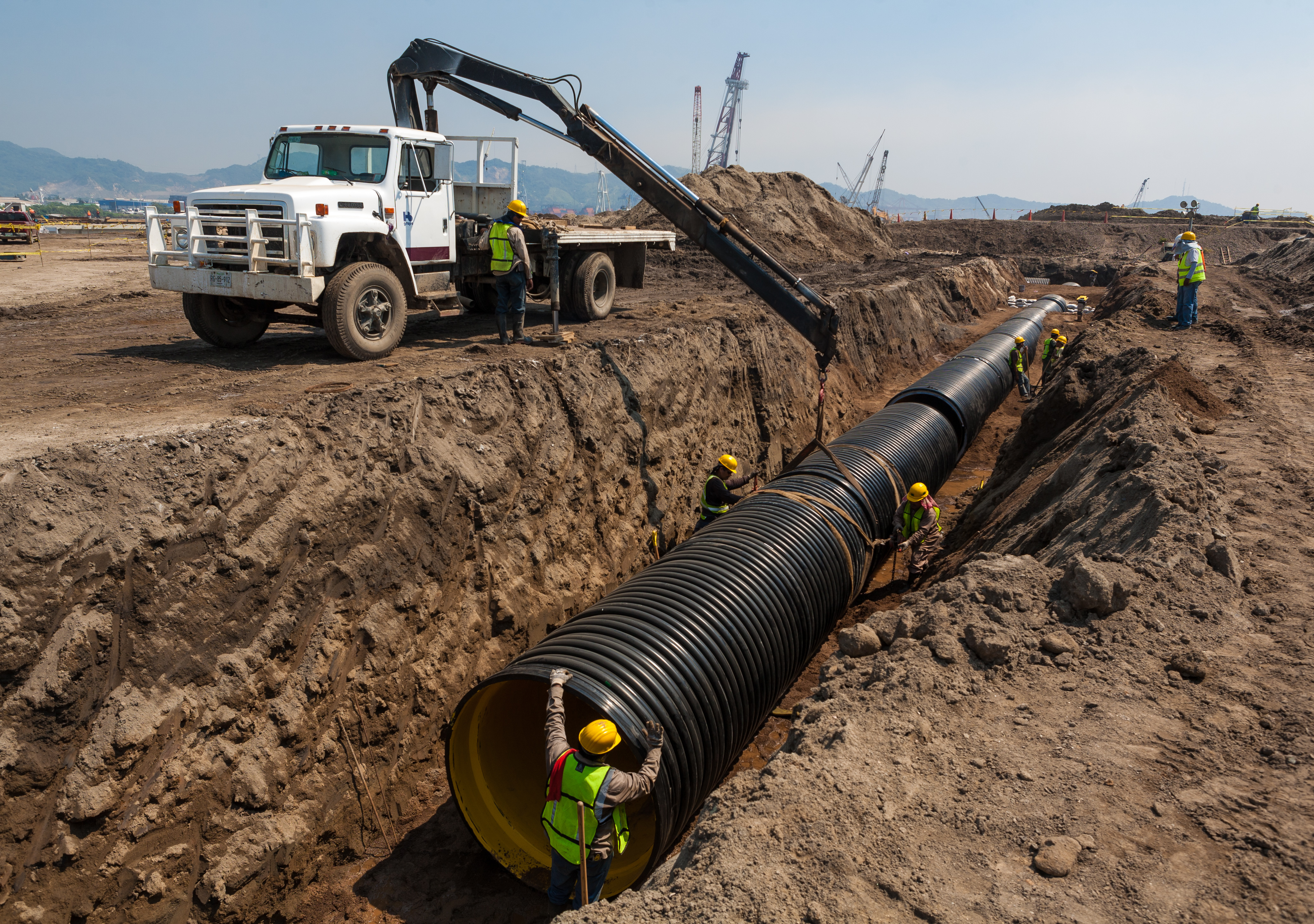|
Interoperability
Interoperability is a characteristic of a product or system to work with other products or systems. While the term was initially defined for information technology or systems engineering services to allow for information exchange, a broader definition takes into account social, political, and organizational factors that impact system-to-system performance. Types of interoperability include syntactic interoperability, where two systems can communicate with each other, and cross-domain interoperability, where multiple organizations work together and exchange information. Types If two or more systems use common data formats and communication protocols then they are capable of communicating with each other and they exhibit ''syntactic interoperability''. XML and SQL are examples of common data formats and protocols. Low-level data formats also contribute to syntactic interoperability, ensuring that alphabetical characters are stored in the same ASCII or a Unicode format in all ... [...More Info...] [...Related Items...] OR: [Wikipedia] [Google] [Baidu] |
Semantic Interoperability
Semantic interoperability is the ability of computer systems to exchange data with unambiguous, shared meaning. Semantic interoperability is a requirement to enable machine computable Logic in computer science, logic, inferencing, knowledge discovery, and data federation between information systems. Semantic interoperability is therefore concerned not just with the packaging of data (syntax), but the simultaneous transmission of the meaning with the data (semantics). This is accomplished by adding data about the data (metadata), linking each data element to a controlled, shared vocabulary. The meaning of the data is transmitted with the data itself, in one self-describing "Information packaging, information package" that is independent of any information system. It is this shared vocabulary, and its associated links to an ontology (information science), ontology, which provides the foundation and capability of machine interpretation, inference, and logic. Syntactic interoperability ... [...More Info...] [...Related Items...] OR: [Wikipedia] [Google] [Baidu] |
Open Standard
An open standard is a standard that is openly accessible and usable by anyone. It is also a common prerequisite that open standards use an open license that provides for extensibility. Typically, anybody can participate in their development due to their inherently open nature. There is no single definition, and interpretations vary with usage. Examples of open standards include the GSM, 4G, and 5G standards that allow most modern mobile phones to work world-wide. Definitions The terms ''open'' and ''standard'' have a wide range of meanings associated with their usage. There are a number of definitions of open standards which emphasize different aspects of openness, including the openness of the resulting specification, the openness of the drafting process, and the ownership of rights in the standard. The term "standard" is sometimes restricted to technologies approved by formalized committees that are open to participation by all interested parties and operate on a consensus basis ... [...More Info...] [...Related Items...] OR: [Wikipedia] [Google] [Baidu] |
Cross-domain Interoperability
Cross-domain interoperability exists when organizations or systems from different domains interact in information exchange, services, and/or goods to achieve their own or common goals. Interoperability is the method of systems working together (inter-operate). A domain in this instance is a community with its related infrastructure, bound by common purpose and interests, with consistent mutual interactions or rules of engagement that is separable from other communities by social, technical, linguistic, professional, legal or sovereignty related boundaries. The capability of cross-domain interoperability is becoming increasingly important as business and government operations become more global and interdependent. Cross-domain interoperability enables synergy, extends product utility and enables users to be more effective and successful within their own domains and the combined effort. Cross-domain interoperability is characterized by common understanding and agreements on both side ... [...More Info...] [...Related Items...] OR: [Wikipedia] [Google] [Baidu] |
Network Effect
In economics, a network effect (also called network externality or demand-side economies of scale) is the phenomenon by which the Value (economics), value or utility a user derives from a Goods, good or Service (economics), service depends on the number of users of compatible products. Network effects are typically positive feedback systems, resulting in users deriving more and more value from a product as more users join the same network. The adoption of a product by an additional user can be broken into two effects: an increase in the value to all other users (''total effect'') and also the enhancement of other non-users' motivation for using the product (''marginal effect''). Network effects can be direct or indirect. Direct network effects arise when a given user's utility increases with the number of other users of the same product or technology, meaning that adoption of a product by different users is complementary. This effect is separate from effects related to price, suc ... [...More Info...] [...Related Items...] OR: [Wikipedia] [Google] [Baidu] |
System Of Systems
The term system of systems refers to a collection of task-oriented or dedicated systems that pool their resources and capabilities together to create a new, more complex system which offers more functionality and performance than simply the sum of the constituent systems. Currently, systems of systems is a critical research discipline for which frames of reference, thought processes, quantitative analysis, tools, and design methods are incomplete. referred to system of systems engineering. Overview Commonly proposed descriptions—not necessarily definitions—of systems of systems, are outlined below in order of their appearance in the literature: # Linking systems into joint system of systems allows for the interoperability and synergism of Command, Control, Computers, Communications and Information (C4I) and Intelligence, Surveillance and Reconnaissance (ISR) Systems: ''description in the field of information superiority in modern military''. # System of systems are large-sc ... [...More Info...] [...Related Items...] OR: [Wikipedia] [Google] [Baidu] |
Computer Compatibility
A family of computer models is said to be compatible if certain software that runs on one of the models can also be run on all other models of the family. The computer models may differ in performance, reliability or some other characteristic. These differences may affect the outcome of the running of the software. Software compatibility Software compatibility can refer to the compatibility that a particular software has running on a particular CPU architecture such as Intel or PowerPC. Software compatibility can also refer to ability for the software to run on a particular operating system. Very rarely is a compiled software compatible with multiple different CPU architectures. Normally, an application is compiled for different CPU architectures and operating systems to allow it to be compatible with the different system. Interpreted software, on the other hand, can normally run on many different CPU architectures and operating systems if the interpreter is available for the ... [...More Info...] [...Related Items...] OR: [Wikipedia] [Google] [Baidu] |
Drainage
Drainage is the natural or artificial removal of a surface's water and sub-surface water from an area with excess water. The internal drainage of most agricultural soils can prevent severe waterlogging (anaerobic conditions that harm root growth), but many soils need artificial drainage to improve production or to manage water supplies. History Early history The Indus Valley Civilization had sewerage and drainage systems. All houses in the major cities of Harappa and Mohenjo-daro had access to water and drainage facilities. Waste water was directed to covered gravity sewers, which lined the major streets. 18th and 19th century The invention of hollow-pipe drainage is credited to Sir Hugh Dalrymple, who died in 1753. Current practices Simple infrastructure such as open drains, pipes, and berms are still common. In modern times, more complex structures involving substantial earthworks and new technologies have been common as well. Geotextiles New storm water drainag ... [...More Info...] [...Related Items...] OR: [Wikipedia] [Google] [Baidu] |
Law Enforcement
Law enforcement is the activity of some members of the government or other social institutions who act in an organized manner to enforce the law by investigating, deterring, rehabilitating, or punishing people who violate the rules and norms governing that society. The term encompasses police, courts and corrections. These three components of the criminal justice system may operate independently of each other or collectively through the use of record sharing and cooperation. Throughout the world, law enforcement are also associated with protecting the public, life, property, and keeping the peace in society. The concept of law enforcement dates back to ancient times, and forms of law enforcement and police have existed in various forms across many human societies. Modern state legal codes use the term law enforcement officer or peace officer to include every person vested by the legislating state with police power or authority; traditionally, anyone sworn or badged who can arrest ... [...More Info...] [...Related Items...] OR: [Wikipedia] [Google] [Baidu] |
Fire Fighting
Firefighting is a profession aimed at controlling and extinguishing fire. A person who engages in firefighting is known as a firefighter or fireman. Firefighters typically undergo a high degree of technical training. This involves structural firefighting and wildland firefighting. Specialized training includes aircraft firefighting, shipboard firefighting, aerial firefighting, maritime firefighting, and proximity firefighting. Firefighting is a dangerous profession due to the toxic environment created by combustible materials, with major risks being smoke, oxygen deficiency, elevated temperatures, poisonous atmospheres, and violent air flows. To combat some of these risks, firefighters carry self-contained breathing apparatus. Additional hazards include falling (accident), falls – a constant peril while navigating unfamiliar layouts or confined spaces amid shifting debris under limited visibility – and structural collapse that can exacerbate the problems encountered in a toxi ... [...More Info...] [...Related Items...] OR: [Wikipedia] [Google] [Baidu] |
Emergency Medical Services
Emergency medical services (EMS), also known as ambulance services, pre-hospital care or paramedic services, are emergency services that provide urgent pre-hospital treatment and stabilisation for serious illness and injuries and transport to definitive care. They may also be known as a first aid squad, FAST squad, emergency squad, ambulance squad, ambulance corps, life squad or by other acronym, initialisms such as EMAS or EMARS. In most places, EMS can be summoned by members of the public (as well as medical facilities, other emergency services, businesses and authorities) via an emergency telephone number (such as 911 in the United States) which puts them in contact with a dispatching centre, which will then dispatch suitable resources for the call. Ambulances are the primary vehicles for delivering EMS, though Nontransporting EMS vehicle, squad cars, Motorcycle ambulance, motorcycles, Air medical services, aircraft, Water ambulance, boats, Firefighting apparatus, fire appara ... [...More Info...] [...Related Items...] OR: [Wikipedia] [Google] [Baidu] |






